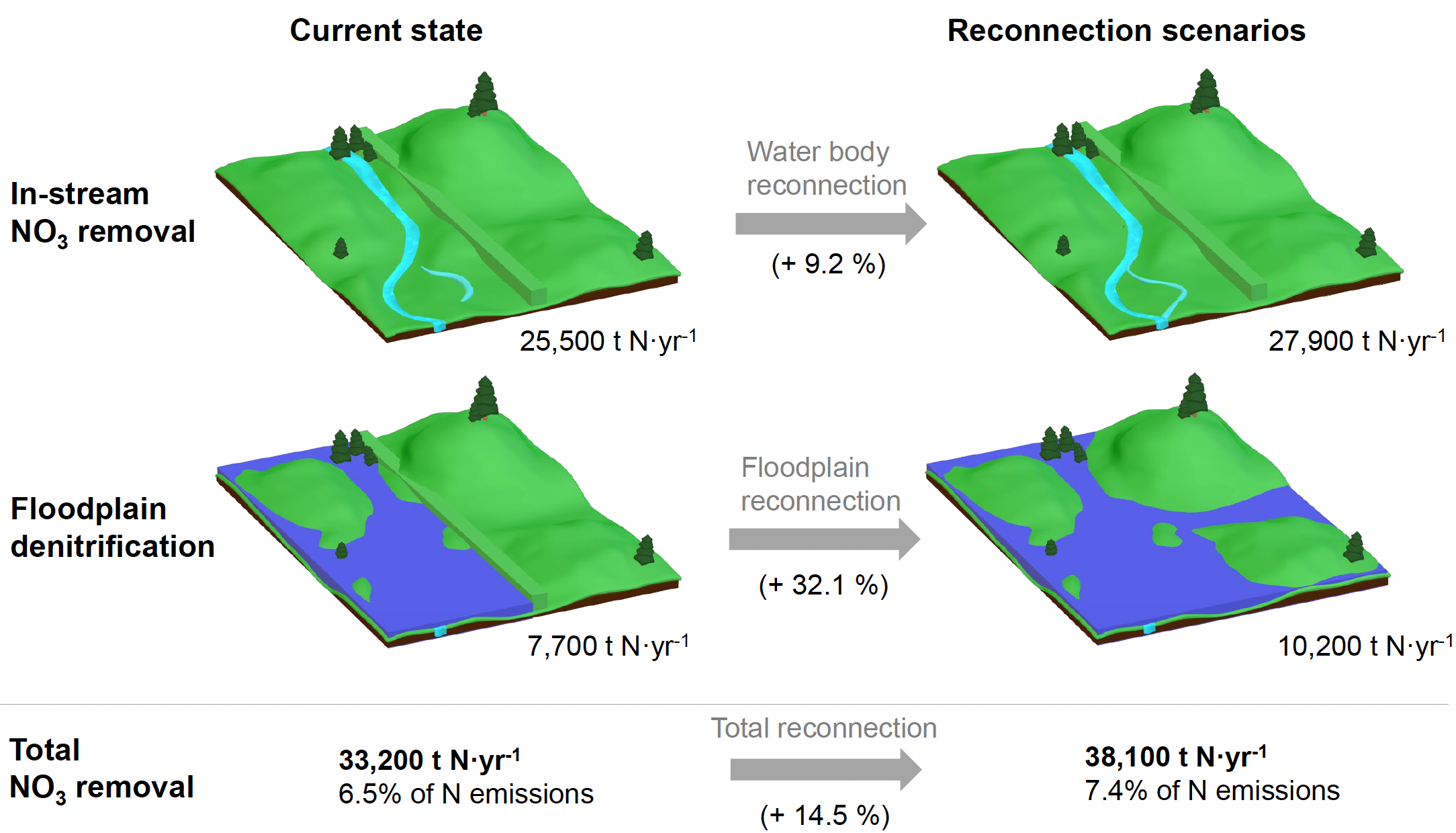IDES - Floodplains are able to reduce nutrient pollution, but not enough. The agricultural sector needs to step up efforts
30-12-2022
A new scientific modelling shows that Danube River Basin floodplains - if restored - could retain more nitrogen and phosphorus. But for pollutant values to drop significantly the agricultural sector needs to reduce emissions as well.
The IDES project* developed a tool that was used to model the retention capacity of the Danube River Basin floodplains – now and in the case the floodplains benefit from works of Ecological Restoration.
Reconnected floodplains in the Danube River Basin would remove more pollutants
The scientists involved in the project modelled that rivers and large active floodplains (3,842 km2) remove around 33,200 tons of nitrate from the rivers per year, which represents 6.5% of the entire nitrate emissions in the Danube River Basin.
The reconnection of potential floodplains (1,298 km2) and disconnected water bodies would increase this function. The floodplains would increase their capacity of retaining nitrate by 2,500 tons per year. In this scenario, the specialists estimate a total of 38,100 tons or 7.4% of emissions retained by the Danube River Basin, every year.

“Floodplains play a limited but critical role in reducing nitrate and supporting water quality”, said Martin Tschikof of the University of Natural Resources and Life Sciences Vienna (BOKU). “Reconnection measures substantially improve this function but are not able to compensate for excess nitrate emissions, which are dominated by diffuse sources,” he added.
The conclusion that the specialists in the IDES project arrived at is that emissions, especially from agriculture, the main emitter, need to be further reduced and also other types of wetlands need to be restored, in order to substantially reduce nutrient loads.
“The polluters need to play their part, because they sit at the source,” Tschikof said.
